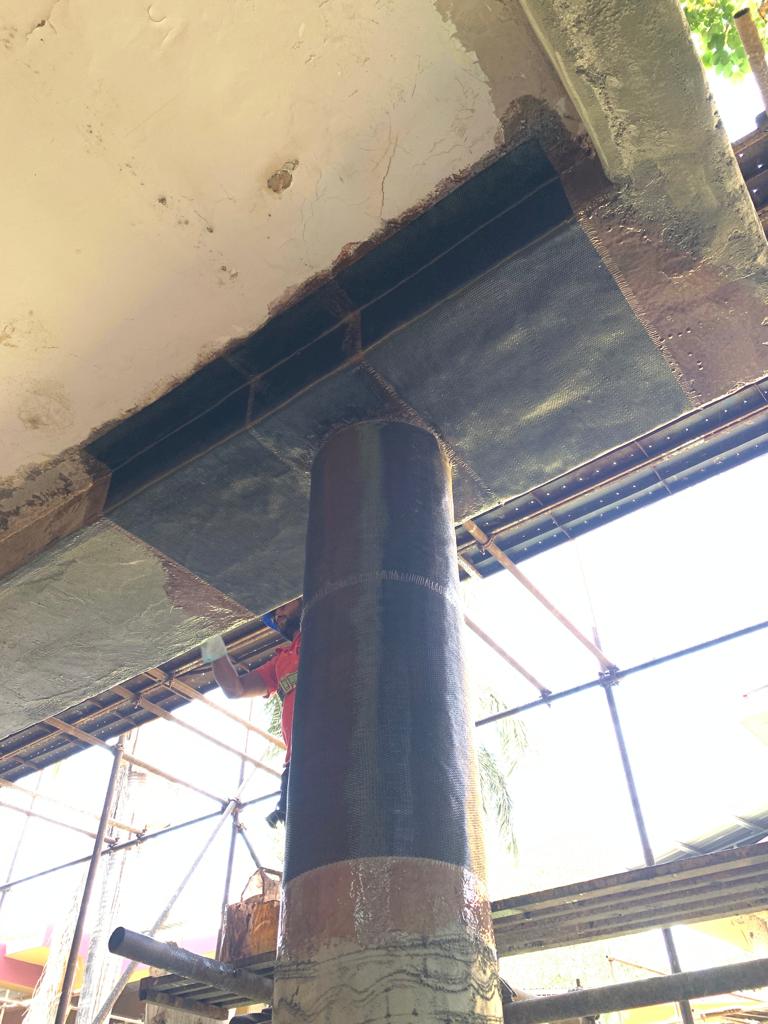Structural integrity is a key aspect of any building or infrastructure. Over time, reinforced concrete elements such as beams, slabs, and columns can weaken due to aging, environmental conditions, or overloading. Flexural strengthening services help restore the bending capacity of these elements, ensuring they can safely carry intended loads. By addressing structural weaknesses, these services improve safety, extend the lifespan of structures, and provide a cost-effective solution for both commercial and residential buildings.
What is Flexural Strengthening?
Flexural strengthening is the process of enhancing the bending resistance of concrete structures. It focuses on beams, slabs, and other load-bearing elements that may have deteriorated or need to support additional loads. The procedure involves applying reinforcement materials such as carbon fiber sheets, steel plates, or near-surface mounted bars. Proper flexural strengthening ensures that the structural element meets modern safety standards while preventing deflection, cracks, or potential failure.
Why Flexural Strengthening is Essential
Over time, many structures experience stress beyond their original design capacity. Increased usage, environmental exposure, and material degradation can reduce the strength of concrete elements. Without timely intervention, beams and slabs may develop cracks or show signs of deflection. Flexural strengthening services are essential in such cases, as they restore load-bearing capacity, enhance durability, and prevent catastrophic structural failures, safeguarding both property and human life.
Common Techniques in Flexural Strengthening
Several methods are widely used in flexural strengthening services:
- Carbon Fiber Reinforced Polymer (CFRP) Wrapping: High-strength CFRP sheets are bonded to concrete surfaces, increasing flexural capacity and resisting corrosion.
- Steel Plate Bonding: Steel plates attached with epoxy adhesives enhance the bending strength of beams or slabs.
- Near-Surface Mounted (NSM) Reinforcement: Steel or composite bars are embedded into grooves cut into the concrete, offering reinforcement with minimal visual impact.
- External Post-Tensioning: Tensioned cables placed externally on structures improve bending resistance, particularly in long-span beams and bridges.
When Structures Require Flexural Strengthening
Several situations call for professional flexural strengthening services:
- Overloading: Renovations or additional floors increase stress on existing structural elements.
- Deterioration: Corrosion, spalling, or weakened concrete reduces structural integrity.
- Structural Damage: Cracks or impact damage compromise load-bearing capacity.
- Design Limitations: Older structures may not meet current load standards or usage requirements.
Benefits of Flexural Strengthening Services
Engaging flexural strengthening services offers multiple benefits:
- Enhanced Load Capacity: Strengthened elements handle higher loads safely.
- Increased Safety: Reduces the risk of structural failures and accidents.
- Cost-Effective Solution: Reinforcement is more economical than complete replacement.
- Extended Lifespan: Properly strengthened structures can last for decades longer.
- Compliance with Modern Standards: Ensures adherence to updated construction and safety codes.
Factors to Consider When Choosing Flexural Strengthening Methods
Choosing the right flexural strengthening method depends on multiple factors:
- Structure Condition: Extent of deterioration and structural damage guides the method choice.
- Load Requirements: Techniques are selected based on new or increased load demands.
- Aesthetic Considerations: Some methods, like NSM reinforcement, maintain the original appearance.
- Accessibility: Limited access areas may require specific solutions like CFRP wrapping.
- Budget: Cost considerations play a role in selecting materials and techniques.
The Flexural Strengthening Process
A typical flexural strengthening service follows these steps:
- Assessment: Engineers inspect the structure, evaluate cracks, deflection, and overall integrity.
- Design: A customized plan is created to meet the specific strengthening requirements.
- Surface Preparation: Concrete surfaces are cleaned, roughened, and prepped for bonding.
- Application: Chosen materials and techniques are applied following strict safety protocols.
- Curing and Monitoring: Strengthened elements are cured properly, and performance is checked to ensure effectiveness.
Applications of Flexural Strengthening Services
Flexural strengthening is widely applied across various sectors:
- Bridges: CFRP wrapping or external post-tensioning strengthens aging bridges.
- Commercial Buildings: Slabs and beams are reinforced to accommodate additional floors or equipment.
- Residential Structures: Older homes can be upgraded to meet modern load requirements.
- Industrial Facilities: Reinforced floors and beams support heavy machinery and equipment safely.
Maintenance After Flexural Strengthening
Even after strengthening, periodic inspections are necessary. Signs of wear, minor cracks, or slight deflection should be monitored and addressed. Proper maintenance ensures that strengthened elements continue to perform as designed. Professional flexural strengthening services often include guidance for future inspections and maintenance schedules, ensuring the long-term durability and safety of the reinforced structures.
Flexural strengthening services are vital for maintaining structural safety and enhancing the performance of concrete elements. With techniques like CFRP wrapping, steel plate bonding, and NSM reinforcement, engineers can restore and improve the bending capacity of beams, slabs, and columns. Investing in professional services ensures safety, longevity, and compliance with modern standards. Timely strengthening is a practical and cost-effective solution for both aging and high-demand structures.
